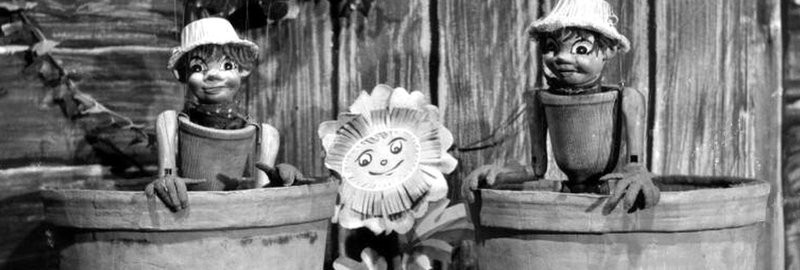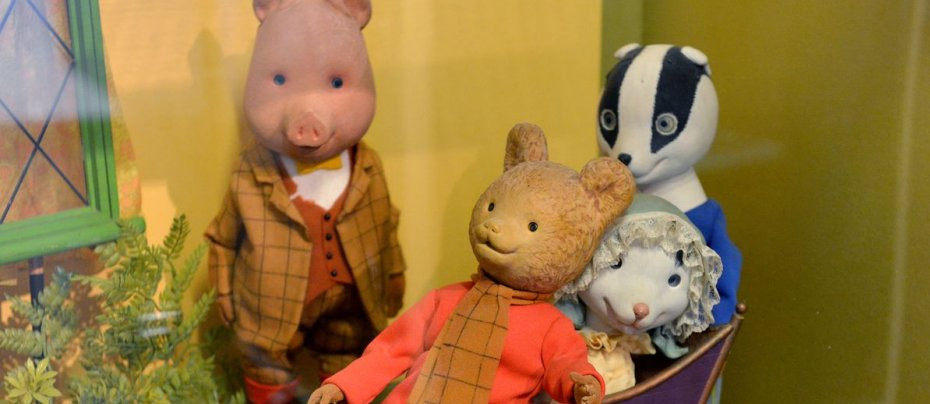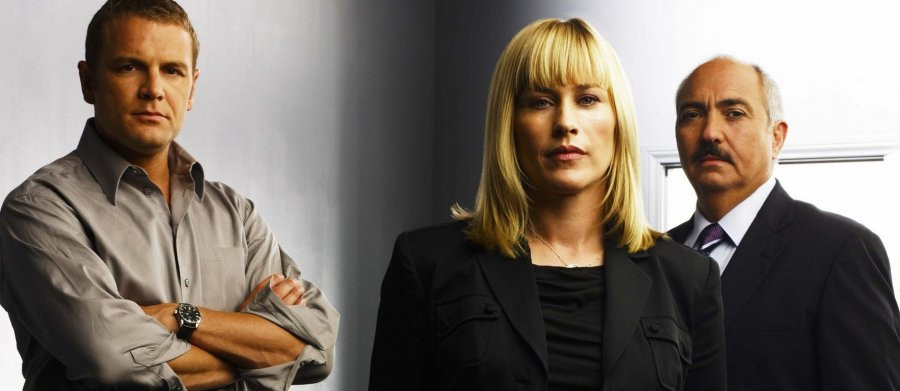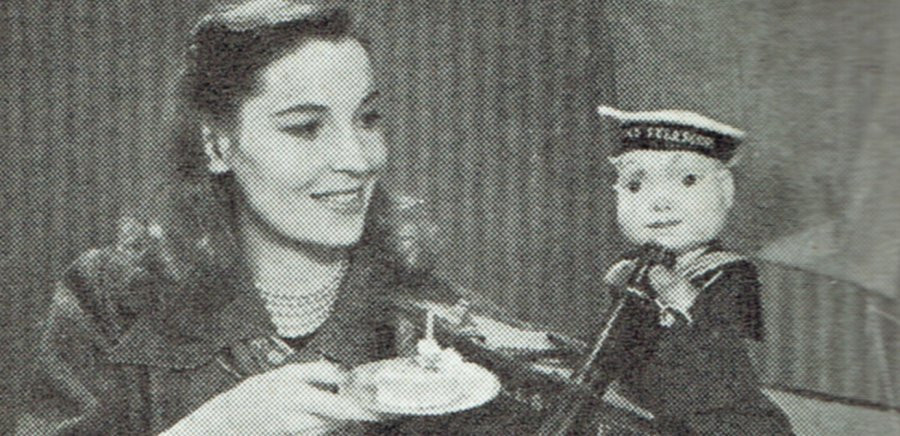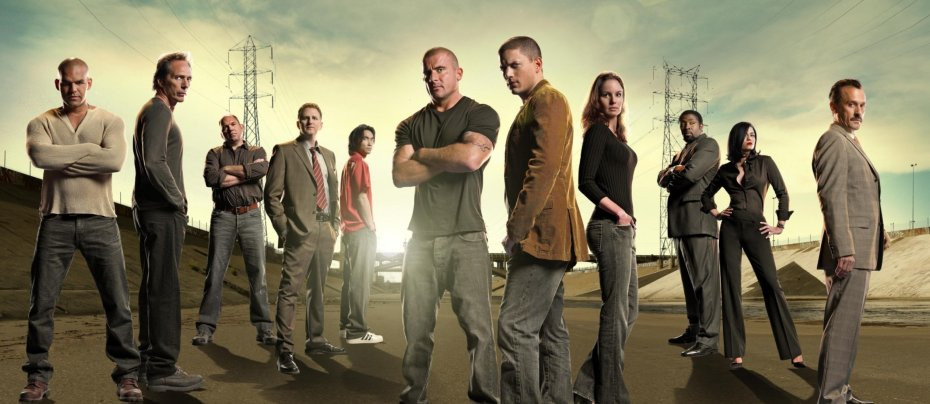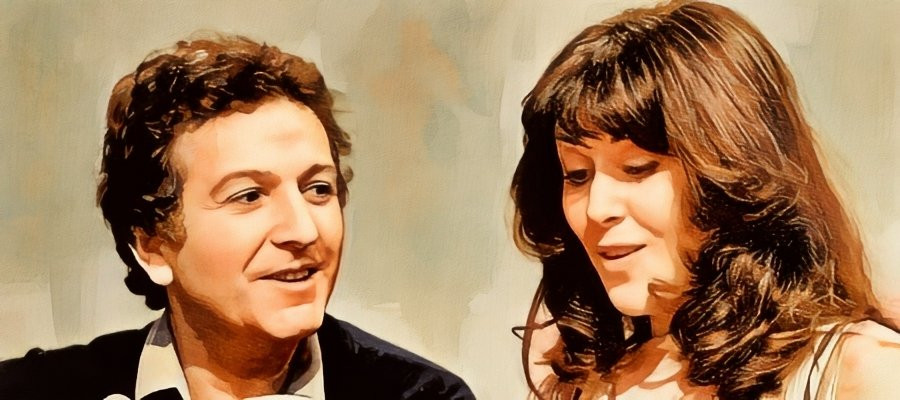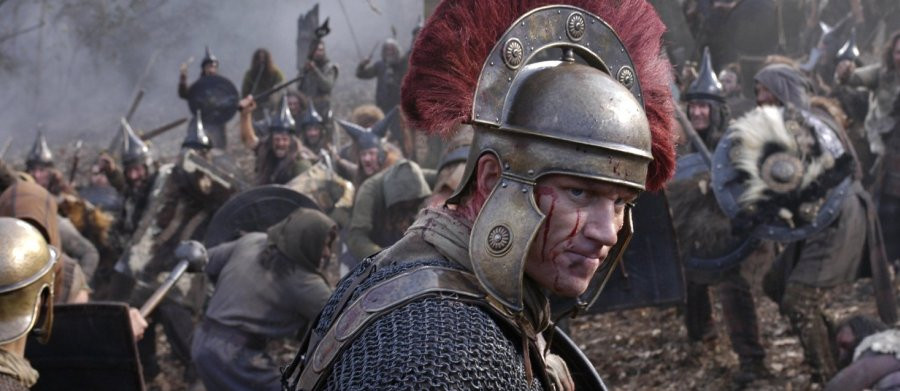
Summerton Mill
2005 - United Kingdom"Down at the bottom a very pretty valley, there's a magical place called Summerton Mill. And when the waterwheel turns at Summerton Mill, a little bit of magic takes place. And, for a little while, everything goes back to how it used to be..."
Summerton Mill was the brainchild of Pete Bryden, a creative entrepreneur, and Ed Cookson, a filmmaker, who produced the series in the studio at Colin Sanders Innovation Centre, Banbury, Oxford. The series’ first aired in September 2005 on CBBC's flagship pre-school programme Tikkabilla and was inspired by a combination of the creators' admiration for the classic stop-frame animation series of the late 1960s and early 1970s as well as Pete Bryden's own secluded 17th century stable (called Somerton Mill), nestled in 7 beautiful acres of water meadow, woodland, river, ponds and islands in rural Oxfordshire.
The result was a modern take on fondly remembered shows such as Bagpuss, Camberwick Green and The Magic Roundabout and produced something of an instant classic as viewers discovered to their delight as the were introduced to characters such as Dan and his dog, Fluffa, the delightfully named Mousey Tongue- an old cat that is happy to while away its days lazing in the sun, Francoise the Montbelliard cow (who moos in French), some chickens and the Millfreaks-small furry creatures that scamper about Summerton Valley diving in and out of burrows. Local residents Dr Naybhur and his wife live a little way up the track, and they all add to the rustic charm of this idyllic setting which we only have to leave when the oocuck, who lives in the oocuck sundial, chirps twice.

“I had an idea for a while that I’d like to do stop frame animation because I liked the feel of those old animations like Camberwick Green and Trumpton” said Pete Bryden. “But I’d never done anything like this before.” Curiously, Pete didn’t rush out and buy a load of books on stop-frame animation. “We didn’t even know what materials to use, but that was part of the fun of it. We didn’t think it was going to be that difficult and I knew I had the ability to do sets and paint backdrops.”
In order to make his vision into reality, Pete approached Ed Cookson who he’d met some six months previously when Ed was making a short film. “I was doing a bit of ‘extras’ work when I met Ed and we’d hit it off then, and I told him about the idea and said I’d quite like to do it.” The first thing they did was bought some software called Stop Motion Pro that had the ability to take images once you’ve captured them and stitch them together very simply.
“To test the software, I made a very basic character with just a head, with no features and just a lump of wood for the body and just the legs. I decided when I was designing the characters that because there wasn’t going to be a lot of movement in terms of turning the hips and so forth that I wouldn’t need too much sideways movement, so the hips were basically straight joints bolted into the body quite high up so there was quite a lumbering movement to them.” They made a very basic version of that and walked it across Pete’s bathroom floor with a camera set up. “We spent a morning filming it and fiddling around with it, but once we’d done that we knew that if we could walk a character convincingly, then as long as we had the characters looking right, we had the sets looking right and the backdrop looking right, we knew we could do it.”
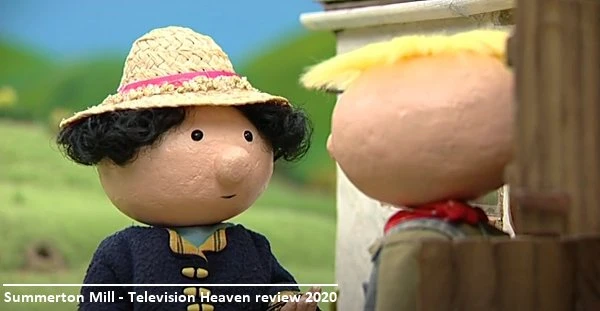
Some decisions then had to be made. Both men needed to continue earning money so there was a limit as to actually how much time they could spend on the project. But they decided from the outset that they would make a complete pilot episode, with the attitude that it should be of a standard high enough to fit into a part of a series. “Once we’d done a pilot episode we had to work out what we were going to do with it.” Said Pete. “We decided to take it to the BBC and wait for them to reject it before we went anywhere else. At that point we also got a third person involved in the production team who was ex BBC - Judy Owen.” Owen joined the BBC in 1975 and left in 1988 after having worked on the Production Panel for 8 years mainly in children's programmes. Her BBC credits include Why Don't You, Blue Peter Special Assignment and We Are the Champions. She went on to set up, format and produce ITV's first digital programme for pre-school children called Tiny Time. “Judy was bit of a mentor and I’d go to her and put ideas to her and ask her what she thought of them.”
“We also sorted out the sizes of the buildings and how big the buildings in the background were going to be and we decided to take everything from the front set to the back set down by 50%.” The pilot episode was actually shot using two sets because they were so restricted by space. Another thing they aimed for was to get as much detail as possible into the sets with the idea that this would be something that would appeal to both kids and parents alike. “We wanted to make a little world that people would want to climb through the television set to get in to.”
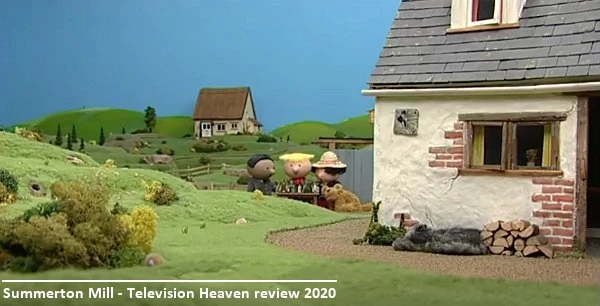
With the sets built, the next step was to build their own character models. They were bottom heavy with feet cast out of lead. Light heads were built by Pete out of builders foam; squirted into a plastic bag and then carved into the shape of a head with Pollyfillier and plenty of sanding down. “Trouble is after a lot of filming it went a bit soft and spongy.” Explained Pete. “When we got the commission we got ScaryCat down in Bristol to remake the models for us and they wrapped the heads in latex and cast them in a light plastic and improved on the bodies putting ball and socket joints in where we had aluminium bundles of wire running through the arms. That now gave us sideways movement as well, which was a complete nightmare when we first started filming because now they moved in every different direction.”
Pete Bryden bought the original Fluffa from a charity shop and 'chopped him about' (he was originally a bear) to create him almost as he looked in the series. "He had a slightly angrier face than the Fluffa we used." Said Pete.
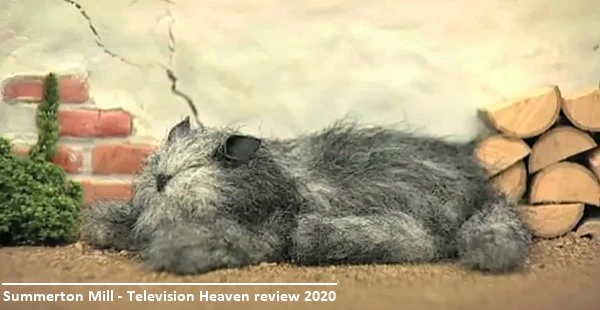
"I sat down and made some rough drawings. I didn’t use anything for inspiration. I looked at the Magic Roundabout to look at things like walk cycles and we used the same method to get our models to walk, just to see the positions they used. But that’s as far as it went. Then I just sat down and did some character drawings."
The series uses a narrative, similar in style to The Magic Roundabout and the Trumpton series made by Smallfilms, rather than individual character voices. This was provided, as indeed it was in the pilot, by Silas Hawkins. “I met him on a short film project and had a chat with him and mentioned that I wanted to do a stop-frame animation at some stage and he immediately told me that he did voice-over work and he was really interested. He sent me a CD with all these voices and I thought ‘yeah, he’d be really great.’ Of course I didn’t know who he was at that time and it wasn’t until much later that we found out that his dad was Peter Hawkins creator of the voices of the original Bill and Ben the Flowerpot Men, Captain Pugwash, the Daleks, The Woodentops and many other classics from the Golden Age of children's TV.
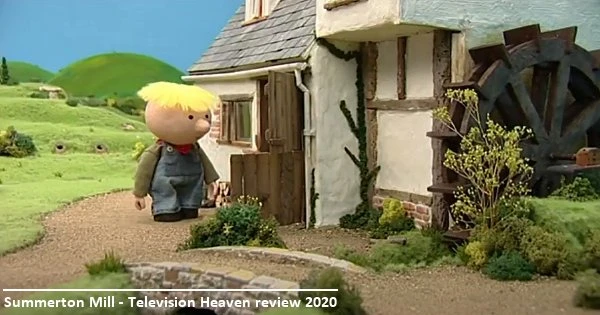
“It took about five weeks to build the sets and puppets, but this was done over a period of several months. Ed and I did the final set building and tweaking between us and, once we were happy (and after a very deep breath) we launched into the filming itself. It took us about 25 days to film the pilot episode, spread over a four-month period.
With the pilot episode wrapped up the next step was to approach the BBC. “We sent a VHS copy of the episode off to the BBC and about two months later they called us back and said they liked it.” They were invited up for a meeting and the three of them, Pete, Ed and Judy, trouped up to London one October morning in 2003 taking with them the character models. They made an immediate impression on Kate Benbow, executive producer of pre-school programmes for CBBC, who explained: "They came in and just put their characters on the table. They clearly cared deeply about their audience and were dedicated to making the best possible product. I couldn't help falling in love with them. Their approach reminded me of Trumpton and Camberwick Green, the programmes I loved when I was very young."
But in spite of the good first impression, it was soon made clear to them that the BBC’s position had changed somewhat since their initial first interest, as Pete Bryden recalled: “We sat at the table with us one side and the BBC execs at the other with these characters in the middle. The first thing they said to us was that ‘quite a few things have changed up here since we arranged this meeting and we haven’t actually got the money we thought we would have’. In spite of their interest, Kate Benbow and her colleagues wouldn’t know where they stood with a proposed series of Summerton Mill until the following February. “We told them that if they really liked it that much we were prepared to wait and that’s what we did. We went back to them in February 2004 and asked them again and they said ‘sorry, we just haven’t got the budget.’ So I came away from that meeting and spoke to Ed and Judy and we prepared some more tapes to send them out to other people.
“About four weeks later we were ready to send these tapes out when I decided to contact the BBC one more time. I wrote them a letter and about two weeks later they contacted me again and invited us back. So in May 2004, Ed and I went to see them and they commissioned thirteen episodes there and then. The BBC were great to deal with, they gave us a realistic deadline, we got half the budget up front when we signed the contract and the other half when we finished.”
“So we were able to come out of that meeting and immediately start shooting. We took on an assistant animator, James Cleland, who we picked up from The Arts Institute at Bournemouth. We spoke to one of the main tutors down there and said ‘have you got anyone down there who you think could get involved in this project?’ and he recommended James who turned out to be brilliant.”
Their meticulous attention to detail was evident throughout each four-minute episode. In one story Doctor Naybhur plays the guitar. This was strictly story-boarded with the hand in the right position for every part of the strum with the left hand moving in the right place for the chord changes. It’s no wonder that only 14 seconds of filming made it into ‘the can’ every day. “A third of the day would be spent getting ready for the shot and planning out the time-line absolutely rigidly so we knew exactly what was happening all the way through frame by frame, and then going through the big psychological barrier of getting psyched up and going into the actual film shoot, which is always a nightmare because it just went on and on and on and there’s always something that made it much longer than you’d expected it to be. It was like the greatest endurance exercise we’d ever been through.”

But it was worth it, because the fine attention to detail is evident throughout the production and makes the series, visually, very appealing, from the gravel on the path to the roofs on the buildings where they went as far as making roofing slates out of clay instead of the easier option of buying off-the-shelf materials, and building the roof using hooks of lead to hold them in place just like on a real roof. Even the wood is from some 17th century floorboards that Pete had at home. The entire series reaches heights in production quality that you would hardly expect for a children’s animated series.
Over the next twelve months (nine of which were taken up by filming), the team were able to complete the 13 episodes that made up the series, a timeless collection of tales for the young and old alike, and especially reminiscent for those who thought that British television no longer made programmes like Trumpton and Chigley, or decided that it had given up on such delightful characters as Windy Miller or Hugh, Hugh, Barney, McGrew, Cuthbert, Dibble and Grub.
The BBC were suitably impressed with the first series for them to commission a second. In all, 26 episodes of Summerton Mill were made, but inexplicably, that second series, which was shown in 85 countries around the world, was not shown on British television. A great shame, because it is a pleasantly enchanting children’s show that harks back to a much simpler time where every day the sun shines brightly and with every turn of the old water wheel a little magic and happiness is spread.
Trivia
When the BBC ordered the series of Summerton Mill they asked the production team to cut two seconds from the introduction which heralds each story. The original intro went like this:
"Down at the bottom of a very pretty valley, there's a magical place called Summerton Mill.
But the stream that used to flow from the river to drive the waterwheel is overgrown, and the old millstones stopped grinding corn years ago.
So there it stands, Summerton Mill, still beautiful in its tumbledown state - a home to the wild animals, the birds and the plants.
But when it rains up on the hills, the river level starts to rise in the valley. The river spills over into the overgrown millrace and, very slowly, the old waterwheel starts to turn.
And when the waterwheel turns at Summerton Mill, a little bit of magic takes place..."
You can watch some episodes of Summerton Mill on YouTube
Series One is available on DVD from Amazon
Laurence Marcus interviewed Pete Bryden in 2005 at Colin Sanders Innovation Centre, Banbury, Oxford.
Seen this show? How do you rate it?
Seen this show? How do you rate it?
Published on June 4th, 2020. Written by Laurence Marcus for Television Heaven.



